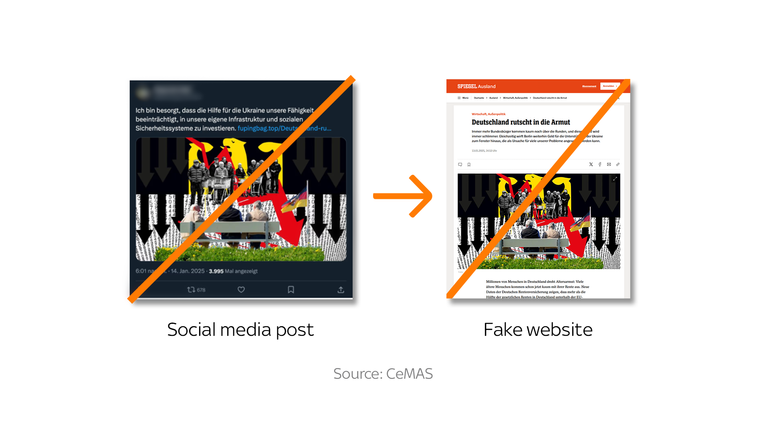Revolutionary Body Scanner by Oxford University Spinout Transforms Clothing Measurement Accuracy
Oxford University Spinout Develops Innovative Body Scanner for Clothing Measurements
An innovative technology firm originating from Oxford University has created a cutting-edge AI tool that accurately scans users’ bodies for precise clothing measurements. This invention aims to enhance the online shopping experience while significantly reducing return rates for UK retailers, potentially saving them billions.
Founded in 2019 by Duncan McKay and Phil Torr, the company has received notable funding, including two grants from Innovate UK and a Future Fashion Factory Grant in collaboration with the University of Leeds, amounting to roughly £1.2 million. McKay, who has extensive experience in product development at companies like L’Oreal and Unilever, expressed his passion for innovation and solving common problems. Together with Torr, they recognized the need for a technological solution to the issue of ill-fitting clothes, leading to the establishment of Aistetic.
Aistetic offers a low-code solution that easily integrates into retailers’ websites via a simple JavaScript snippet, making it compatible with platforms such as WordPress and Shopify. This tool allows consumers to choose a garment and scan their body using AI technology, providing accurate measurements and sizing specific to each retailer in under three minutes. McKay emphasized that this innovation could reduce return rates by as much as 30%, which can lead to significant savings for retailers.
According to McKay, users can obtain their measurements with a remarkable 98% accuracy simply by recording themselves with their device while turning in front of the camera for about 10 seconds. The firm aims to empower individuals with their body data, enabling more informed purchasing decisions. The next phase includes developing a no-code solution for Shopify users, streamlining access to their innovative technology.
The substantial return rates not only impact retailers’ profits but also pose a serious environmental concern—contributing significantly to the pollution generated by the fashion industry, which is estimated to account for 10% of global carbon emissions. McKay highlighted that returning garments can produce up to 4.2 kg of carbon emissions, mainly when items are returned to stores. The company believes that their user-friendly technology promotes a more responsible approach to fashion consumption.
For those interested in exploring AI and big data insights from industry experts, the AI & Big Data Expo is set to take place in Amsterdam, California, and London. Additional enterprise technology events and webinars powered by TechForge can be found to stay informed about the latest advancements.
Key factors contributing to this gap include inadequate planning, insufficient data quality, and a lack of alignment between stakeholders. Many companies embark on AI initiatives with lofty goals but fail to strategically address these underlying issues, ultimately hindering their projects from achieving operational success.
Organizations must prioritize comprehensive strategies that encompass careful project scoping, robust data collection practices, and fostering collaboration among teams to bridge this execution gap. Only then can they harness the full potential of AI technologies in driving innovation and improving efficiencies.
- Teachers in England are now permitted to integrate AI into their classrooms.
- Exploring AI’s growing role within the cryptocurrency sector.
- OpenAI’s Sam Altman states that we are entering an era of superintelligence.
This section outlines various applications of machine learning in multiple industries, from finance to security, showcasing its versatility and impact.

AI and Bots: Allegations of Fraudulent Boosting in Music Streams
Benefits of Partnering with Outsourced Developers in AI
Latest Insights
- AGI and the Future: A National Discussion on Superintelligence
- Sam Altman from OpenAI: The Start of the Superintelligence Era
- Exploring Applications of AI in Chatbots and Communication
Magistral: Mistral AI Challenges Big Tech with Reasoning Model
Date: June 10, 2025
Mistral AI is making waves in the tech industry by introducing a reasoning model that directly competes with established big tech companies. This innovation aims to enhance the capabilities of artificial intelligence by integrating complex reasoning processes, offering more effective solutions in various applications.
The AI Blockchain: What Is It Really?
Date: June 10, 2025
The concept of AI and blockchain technology is gaining traction, yet many still question its true implications and functionality. Understanding how these technologies intertwine can unlock new opportunities and reshape industries, fostering greater efficiency and transparency.
Sam Altman, OpenAI: The Superintelligence Era Has Begun
Date: June 11, 2025
According to Sam Altman, the landscape of artificial intelligence is undergoing a seismic shift as we enter the era of superintelligence. This new phase is characterized by advancements that could redefine human-machine interactions, potentially leading to unprecedented benefits and challenges in our society.
When handling forms via AJAX, several key checks and operations take place to ensure a smooth user experience. Initially, the script assesses whether the content includes a redirect function and if there’s existing form data to display. If valid form content is detected, it populates the wrapper with this information.
If there are validation errors, it applies the corresponding error class; otherwise, it removes that class for a clean presentation. A slight delay is introduced to fix a Chrome bug, after which initialization functions for datepickers and price fields are triggered. The current page number is also captured for navigation purposes.
If the form submission is successful, the confirmation message is loaded, and appropriate events are triggered to notify the system of the update. If a redirect is required, it executes the redirect function to transition to a new location.
To ensure that necessary accessibility features are included, a visibility test is created, which will determine if the form is displayed properly. A debounce function is implemented to optimize the performance when triggering post-render events, ensuring they are only called once after multiple changes. Mutation observers are also used to respond to changes in the form’s visibility, activating the post-render operations as needed.







